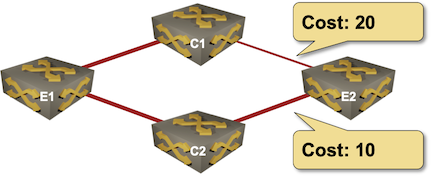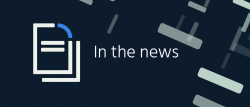Tech Bytes: Why Sanitas Selected Aruba EdgeConnect As Its SD-WAN Solution (Sponsored)
On today's Tech Bytes podcast we speak with healthcare provider Sanitas on why the organization is replacing its existing SD-WAN vendor with Aruba EdgeConnect to provide network insights for visibility and troubleshooting, fine-grained segmentation for security and compliance, and easier operation for a small IT team.Tech Bytes: Why Sanitas Selected Aruba EdgeConnect As Its SD-WAN Solution (Sponsored)
On today's Tech Bytes podcast we speak with healthcare provider Sanitas on why the organization is replacing its existing SD-WAN vendor with Aruba EdgeConnect to provide network insights for visibility and troubleshooting, fine-grained segmentation for security and compliance, and easier operation for a small IT team.
The post Tech Bytes: Why Sanitas Selected Aruba EdgeConnect As Its SD-WAN Solution (Sponsored) appeared first on Packet Pushers.
Packet Actions – Python and Scapy
Hello and welcome to the “Packet Actions” series of blog posts. I’d like to spend a few posts talking through how you can programmatically integrate with a network dataplane. I had thrown around the idea of calling this series “Doing things with packets” but that seemed a bit long and also could mean just about anything. So what does Packet Actions mean? Well – its the shortest way I could come up with to say “Looking at packets on the wire and doing things based on what you see in the packet”. To discuss this further I’d like to talk about the often made analogy of network engineers being plumbers – an analogy that makes fairly good sense in most cases. For instance, network engineers create the paths for data to flow – plumbers make paths for water to flow. Additionally both need to make sure that there are no blockages or issues with handling the amount of data or water that needs to flow through the pipes. Going a step further – plumbers might use a diagnostic tool like a scope to physically look inside the pipes if theres a blockage or issue so they can see what’s going Continue reading
Single-Metric Unequal-Cost Multipathing Is Hard
A while ago, we discussed whether unequal-cost multipathing (UCMP) makes sense (TL&DR: rarely), and whether we could implement it in link-state routing protocols (TL&DR: yes). Even though we could modify OSPF or IS-IS to support UCMP, and Cisco IOS XR even implemented those changes (they are not exactly widely used), the results are… suboptimal.
Imagine a simple network with four nodes, three equal-bandwidth links, and a link that has half the bandwidth of the other three:

Single-Metric Unequal-Cost Multipathing Is Hard
A while ago we discussed whether unequal-cost multipathing (UCMP) makes sense (TL&DR: rarely), and whether we could implement it in link-state routing protocols (TL&DR: yes). Even though we could modify OSPF or IS-IS to support UCMP, and Cisco IOS XR even implemented those changes (they are not exactly widely used), the results are… suboptimal.
Imagine a simple network with four nodes, three equal-bandwidth links, and a link that has half the bandwidth of the other three:

The Week in Internet News: Russia Hackers Target Human Rights Groups

Targeted attacks: A Russian hacking group is targeting international aid and human rights organizations, according to Microsoft, Al Jazeera reports. The recent attacks, from the Nobelium group, targeted about 3,000 email accounts of more than 150 organizations spanning 24 countries. Nobelium is blamed for the recent SolarWinds attacks as well. The group gained access to […]
The post The Week in Internet News: Russia Hackers Target Human Rights Groups appeared first on Internet Society.
Illusory Correlation and Security
Fear sells. Fear of missing out, fear of being an imposter, fear of crime, fear of injury, fear of sickness … we can all think of times when people we know (or worse, a people in the throes of madness of crowds) have made really bad decisions because they were afraid of something. Bruce Schneier has documented this a number of times. For instance: “it’s smart politics to exaggerate terrorist threats” and “fear makes people deferential, docile, and distrustful, and both politicians and marketers have learned to take advantage of this.” Here is a paper comparing the risk of death in a bathtub to death because of a terrorist attack—bathtubs win.
But while fear sells, the desire to appear unafraid also sells—and it conditions people’s behavior much more than we might think. For instance, we often say of surveillance “if you have done nothing wrong, you have nothing to hide”—a bit of meaningless bravado. What does this latter attitude—“I don’t have anything to worry about”—cause in terms of security?
Several attempts at researching this phenomenon have come to the same conclusion: average users will often intentionally not use things they see someone they perceive as paranoid using. Continue reading
netsim-tools release 0.7: Cumulus VX, EIGRP, and BGP IPv6 AF
netsim-tools release 0.7 is published, bringing you the following goodies (including stuff published a week ago as release 0.6.3):
- Cumulus VX support on libvirt and virtualbox.
- EIGRP configuration module
- BGP IPv6 address family
- Controlled BGP community propagation
Other changes include:
netsim-tools release 0.7: Cumulus VX, EIGRP, and BGP IPv6 AF
netsim-tools release 0.7 is published, bringing you the following goodies (including stuff published a week ago as release 0.6.3):
- Cumulus VX support on libvirt and virtualbox.
- EIGRP configuration module
- BGP IPv6 address family
- Controlled BGP community propagation
Other changes include:
VyControl Installation on Standalone VyOS Router
So far, we have discussed both the manual and Docker methods of installing VyControl. The manual method consists of cloning the VyOS git repository and installing Python dependencies in a virtual environment. The Docker method is based on downloding VyControl Docker image from Docker hub and launching the container. In both cases, VyOS controller is […]Continue reading...
Worth Reading: Azure Datacenter Switch Failures
Microsoft engineers published an analysis of switch failures in 130 Azure regions (review of the article, The Next Platform summary):
- A data center switch has a 2% chance of failing in 3 months (= less than 10% per year);
- ~60% of the failures are caused by hardware faults or power failures, another 17% are software bugs;
- 50% of failures lasted less than 6 minutes (obviously crashes or power glitches followed by a reboot).
- Switches running SONiC had lower failure rate than switches running vendor NOS on the same hardware. Looks like bloatware results in more bugs, and taking months to fix bugs results in more crashes. Who would have thought…
Worth Reading: Azure Datacenter Switch Failures
Microsoft engineers published an analysis of switch failures in 130 Azure regions (review of the article, The Next Platform summary):
- A data center switch has a 2% chance of failing in 3 months (= less than 10% per year);
- ~60% of the failures are caused by hardware faults or power failures, another 17% are software bugs;
- 50% of failures lasted less than 6 minutes (obviously crashes or power glitches followed by a reboot).
- Switches running SONiC had lower failure rate than switches running vendor NOS on the same hardware. Looks like bloatware results in more bugs, and taking months to fix bugs results in more crashes. Who would have thought…
Tools 7. Show me your packets … with TCP dump
Hello my friend,
When something goes wrong with the distributed application, where the network is involved (e.g., between client and web service, or between frontend and backend of services), the network is a first thing to be blamed. After the troubleshooting, it is often turned out that the network is innocent, but we need first need to prove it.
2
3
4
5
retrieval system, or transmitted in any form or by any
means, electronic, mechanical or photocopying, recording,
or otherwise, for commercial purposes without the
prior permission of the author.
Automated troubleshooting for automated networks?
The truth is that automation helped me so many times to figure out the root cause of the network outages or malfunctions that I even stopped counting that. I may say that automaton solutions work perfect, if you create them to solve your issues and tailor to your environment.
That’s what our Live Network Automation Training (10 weeks) and Automation with Nornir (2 weeks) are all about: to show you real automation in a real environment with multiple vendors together. No matter what those vendors are, the automation principles, tools Continue reading